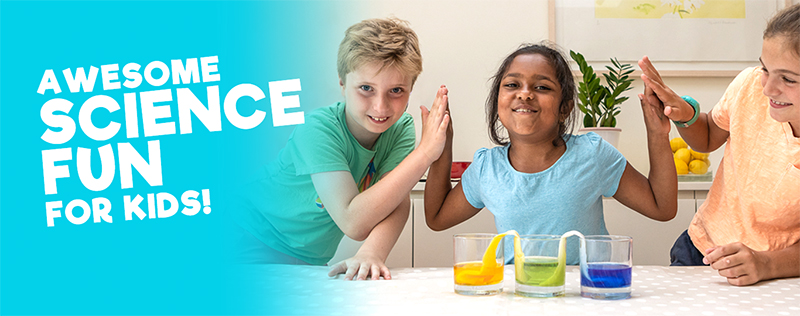
Kids make the best scientists! WHY? Because they’re inquisitive, keen to learn and love asking why, why, why! We’ve selected the top ten favourite science experiments from Whizz Pop Bang magazine, ready for you to try at home.
Get ready for some seriously fun science! All you need to do these simple experiments are some household ingredients, a bit of space and your best curiosity hat on (you don’t really need a hat on at all, but you could make one!).
These easy experiments and activities can be done indoors at the kitchen table, or outside in the garden.
Can you really SUPERSIZE a marshmallow? YES YOU CAN!
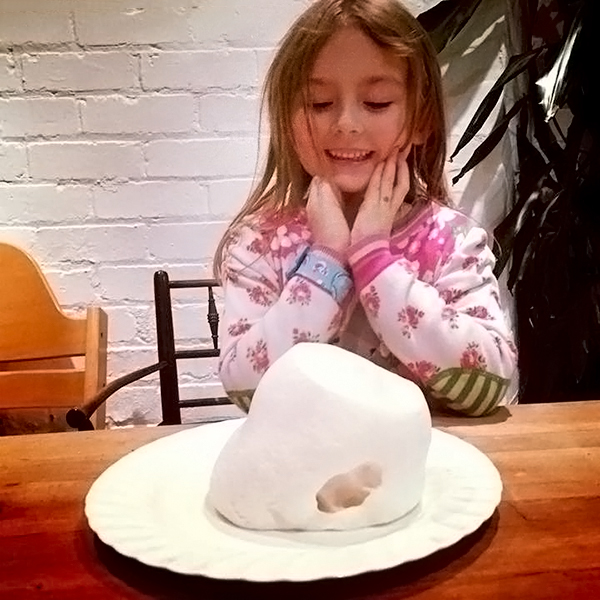
You will need: a marshmallow and a microwave
Step-by-step guide to super-sizing a marshmallow:
1. Put a large marshmallow on a plate and ask a grown-up to microwave it for 30-60 seconds.
2. You’ll see that it grows...and grows... and then goes black inside.
Marshmallows are foamy because they’ve got loads of tiny air pockets in them. The microwaves heat up the water vapour inside them, making the molecules bounce around more and more, pushing the air pockets outwards. But, eventually, the sugar starts to burn (so they’ll taste better after just 30 seconds!). They’re super hot when they come out, so be careful!
This simple science experiment is from Whizz Pop Bang 12 days of Christmas (issue 17)
Have you ever tried making magical dragon eggs? Fool your friends, and then eat them!
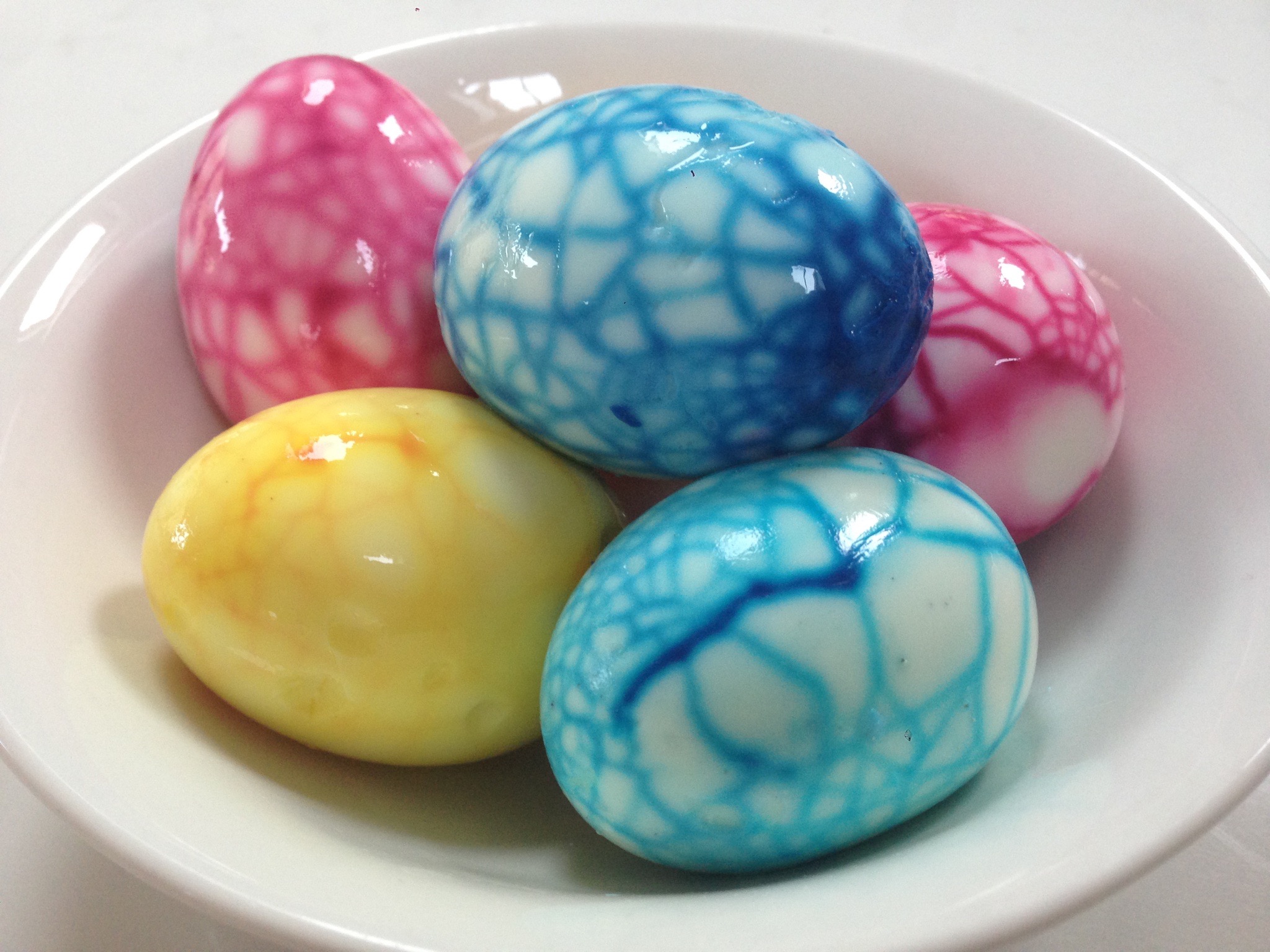
You will need: eggs and food colouring
Step-by-step guide to making dragon eggs:
1. Ask a grown-up to hard-boil some eggs.
2. Let them cool and then roll them on the work-surface to crackle the shell all over.
3. Half-fill some cups with water and mix in a good dollop of food colouring into each cup (the gel pastes work best).
4. Pop an egg into each cup and leave in the fridge overnight.
5. Peel off the shell and you’ll see that the dye is taken up wherever the shell is cracked.
6. Now gobble them up!
This quick and easy science experiment is from Whizz Pop Bang Eggs-traordinary Science (issue 8)
Who’s ready to make fake poo?? Urghhh, disgusting AND yummy!
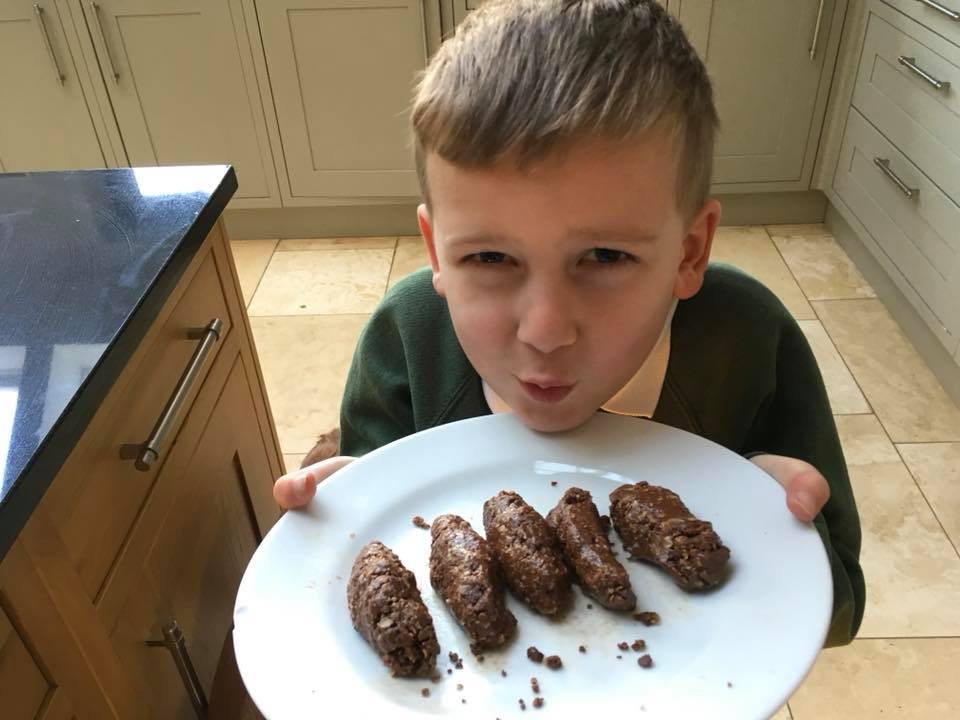
You will need: chocolate, raisins, biscuits
Step-by-step guide to making edible poo:
1. Break the chocolate into the bowl and drizzle the syrup over it.
2. Finely crush the biscuits.
3. Ask an adult to microwave the chocolate for 30-60 seconds until melted.
4. Mix in the biscuit crumbs and raisins.
5. If the mixture is too dry, add more syrup or microwave for ten more seconds.
6. When it's cool enough to handle, roll the mixture into two or three sausage shapes.
You should find it looks just like real poo! Tell everyone it's poo... and then eat it! It's poo-a-licious!
This gross science experiment for kids is from Whizz Pop Bang Ploptastic Poo (issue 32)
What do you think, can you make an egg float?
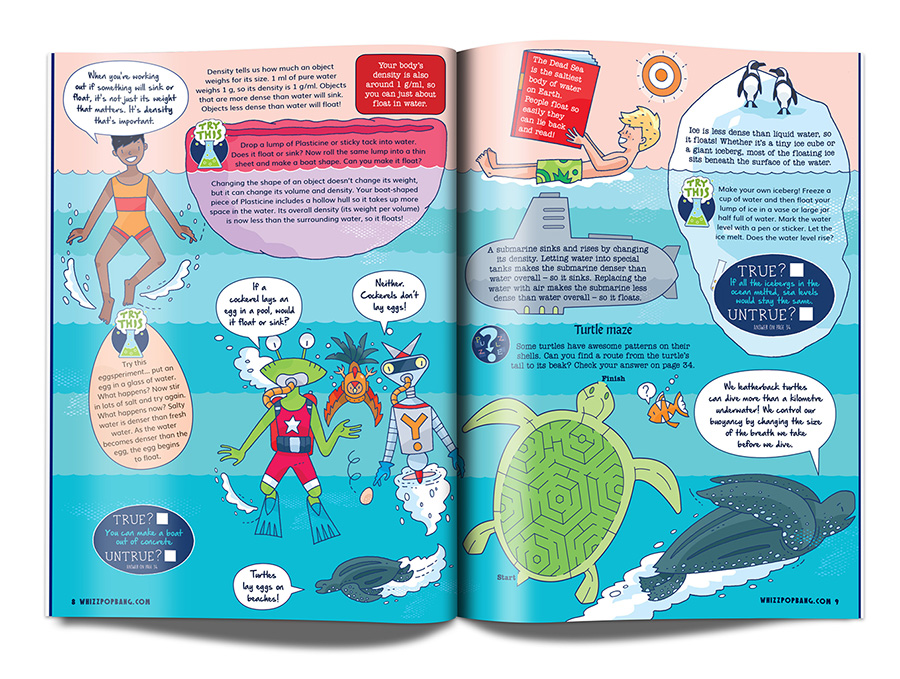
You will need: lots of salt, measuring jug of water, an egg and a spoon
Try this eggsperiment... put an egg in a glass of water. What happens? Now stir in lots of salt and try again. What happens now? Salty water is denser than freshwater. As the water becomes denser than the egg, the egg begins to float!
This science investigation is from Whizz Pop Bang Boating and Floating (issue 45)
Turn a real bone into a bendy bone! Ideal for Halloween science crafts.
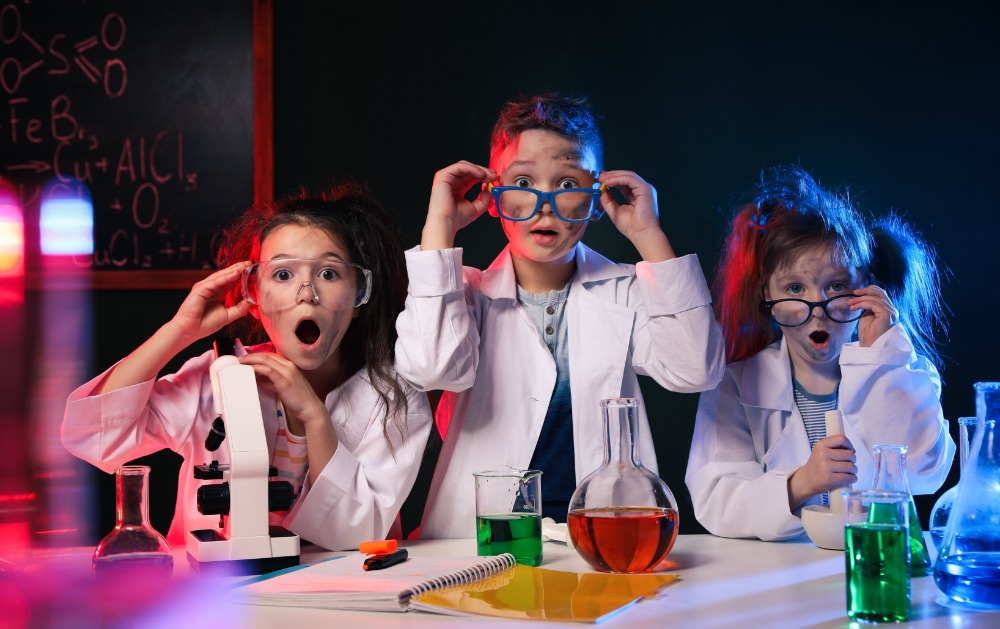
You will need: 2 chicken bones (legs are ideal), jar with a lid (large enough to hold one bone with space at the top), vinegar, clingfilm
Step-by-step guide to making a real bone bendy:
1. Remove all the meat from both bones and wash and dry them carefully.
2. Gently try to bend both bones.
3. Place one bone in the jar, cover with vinegar and replace the lid.
4. Wrap the other bone in cling film and leave for three days.
5. For best results, change the vinegar in the jar after three days and then leave the experiment for another two days.
This spooky science experiment is from Whizz Pop Bang Spectacular Skeletons (issue 27)
Can a triangle fly? Give it a try!
You will need: a paper straw, 2 strips of paper, tape
Step-by-step guide to making a flying triangle:
1. Cut out a paper strip 2.5cm x 20cm.
2. Cut out another paper strip 2.5cm x 12cm.
3. Fold the longer strip into a triangle with equal sides and secure with sticky tape.
4. Make a circle with the shorter strip and secure with tape.
5. Now fix the triangle onto one end of the straw, and the circle onto the other.
6. Your flying machine is ready to throw
Try creating some more straw planes in different shapes - try changing the shape of the smaller loop or changing the length of the straw. Remember to change one variable at a time and record your results like a real scientist!
This outdoor science experiment is from Whizz Pop Bang Sky High Science (issue 36)
Create a crime scene and discover who’s innocent, and who isn’t…
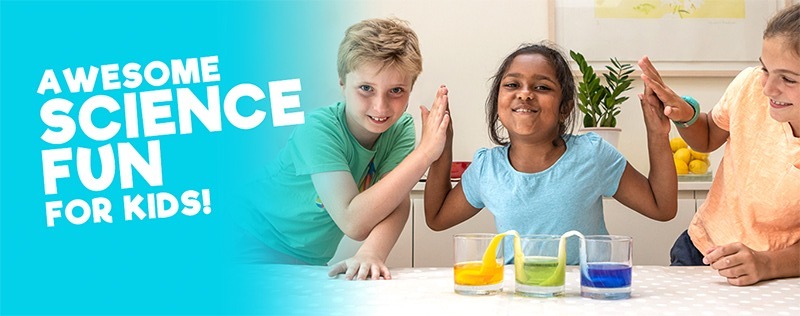
You will need: blackcurrant squash, paintbrush, container, two sheets of paper
Step-by-step guide to The Blood Spatter Test:
1. Add a little cordial to the container – this will be ‘blood’.
2. Use the brush to drip a drop of ‘blood’ on a sheet of paper.
3. Try flicking the brush on the other sheet of paper.
You should find drops that fall downwards are round with tiny projections on all sides. Flicked drops are elliptical (elongated) with projections in the direction they were moving. Can you set up a crime scene in your garden and find out who dunnit?
This forensic science experiment for kids is from Whizz Pop Bang Spy Science (issue 13)
Did you know you can make water walk? That’s impossible isn’t it?
You will need: water, 3 clear glasses, yellow and blue food colouring, kitchen roll
Step-by-step guide to making water walk:
1. Fill two glasses with water.
2. Add some blue food colouring to one and some yellow food colouring to the other.
3. Place the two glasses of coloured water either side of the empty glass.
4. Fold a sheet of kitchen roll lengthways until it fits into the glass.
5. Now place one end of the kitchen roll into the blue water and the other end into the empty glass. Do the same with the other piece of kitchen roll and the glass of yellow water.
You should find the water will start ‘walking’ up the kitchen roll and over into the middle glass. After a couple of hours, the middle glass should have a mix of the two colours of water in it. This is because the water travels through tiny gaps between the kitchen roll’s fibres. This is called capillary action. Plants use capillary action to help them move water from the ground up through their stems.
This fun experiment for kids is from Whizz Pop Bang Water Force (issue 30)
Learn all about your kidneys with this fake pee experiment
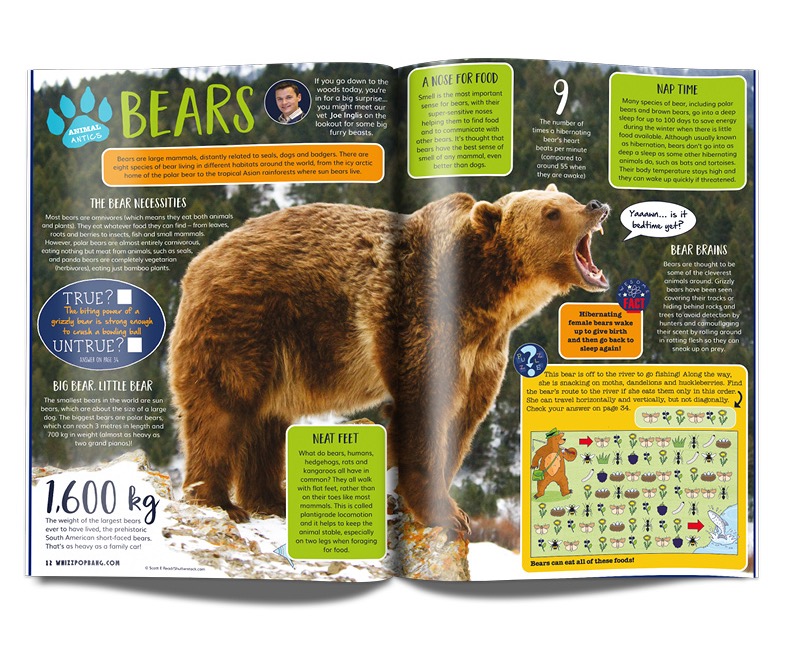
You will need: chamomile tea bag, ordinary tea bag, orange juice, teapot or heatproof jug and three clear glasses
Step-by-step guide to making fake pee:
1. Put the camomile tea bag into the teapot and ask a grown-up to add some hot water.
2. Give it a quick stir and then pour some of the liquid into the first two glasses.
3. Add a splash of orange juice to the second glass and stir.
4. Add the ordinary teabag to the pot, give it a quick stir and immediately pour some liquid into the third glass.
You’ve made fake wee!
Glass 1: The ‘wee’ in the first glass should look like normal, healthy wee. This is the kind of wee you make when you’ve drunk plenty of water.
Glass 2: The ‘wee’ in the second glass is cloudy – urinary tract infections can make wee look like this. If you notice your wee looks cloudy and smells bad, you might need to see a doctor!
Glass 3: The ‘wee’ in the third glass looks very concentrated – if your wee looks dark like this you need to drink some water! Sometimes your first wee of the day looks darker because your body is more dehydrated after a night’s sleep.
This simple science experiment for kids is from Whizz Pop Bang Pee Power (issue 47)
Create some epic custard goo! Just like slime but wey more fun (and no need for Borax or any nasties)
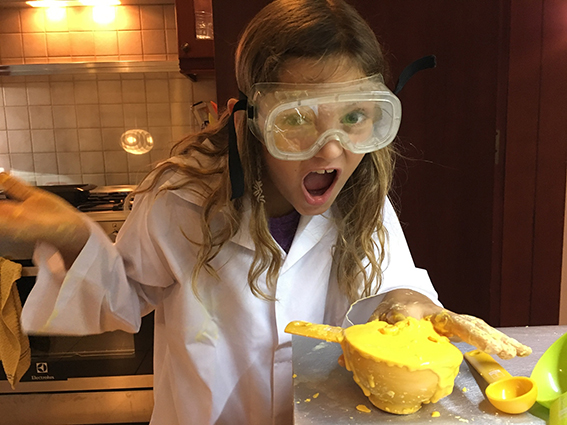
You will need: 1 cup of custard powder, ½ cup of water, large mixing bowl
1. Pour 1 cup of custard powder into a large mixing bowl then mix in ½ a cup of water.
2. Now get in there with your hands– try grabbing a handful, pressing it into a ball and then relaxing your grip.
Hit it, scratch it, stir it – it’s crazy! Mixing cornflour (the main ingredient in custard powder) with water makes a non-Newtonian fluid. Without any pressure on it, the cornflour particles flow around suspended in water and the mix acts like a liquid. But put pressure on it and the water is pushed out the way, the cornflour particles pack together and it acts like a solid!
This super cool experiment for kids is from Whizz Pop Bang 12 days of Christmas (issue 17)
When you’re helping children with science experiments, remember answers aren’t the aim of the game; it’s the confidence to speak out and ask why? Helping a child to understand that you don’t have to know or understand everything, but instead that the process of learning itself can be exciting and rewarding. Add the word “yet” onto the end of frustrated cries of “I don’t know how,” “I don’t understand” and “I can’t do it” to turn defeat into the start of a voyage of curiosity.
Getting things wrong can be annoying and hard for any of us to handle, but mistakes can also be funny, informative and surprising. Did you know that Play-doh, Saccharin sweetener and the microwave were all the result of accidental discoveries? Help your child to understand why something hasn’t worked as expected, get excited about any surprising results, then work out how you can vary the process to get a different outcome next time.
For loads of SCIENCE FUN in your house every month subscribe to Whizz Pop Bang magazine! Delivered to your budding young scientist from just £4.59 per month, with FREE UK delivery.
